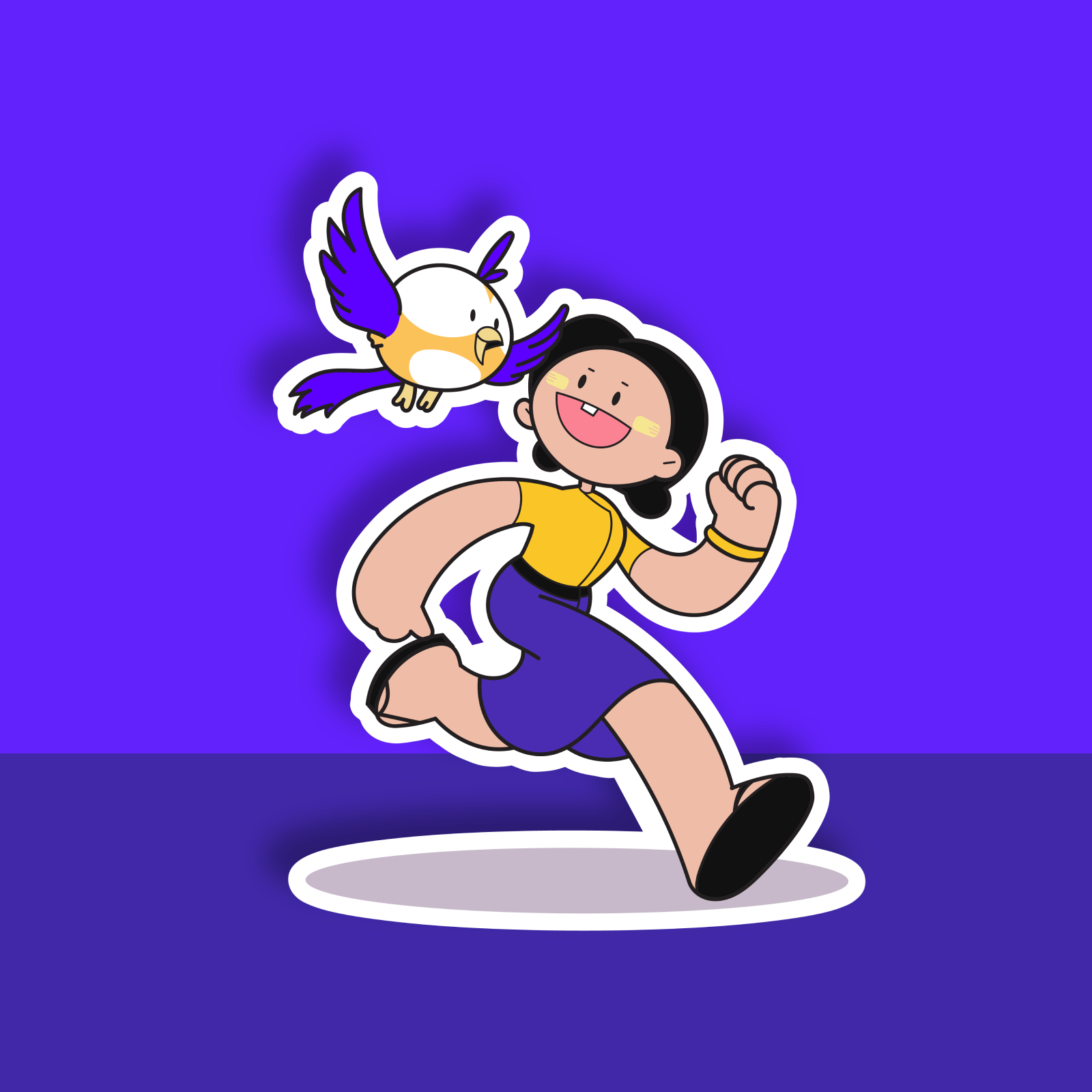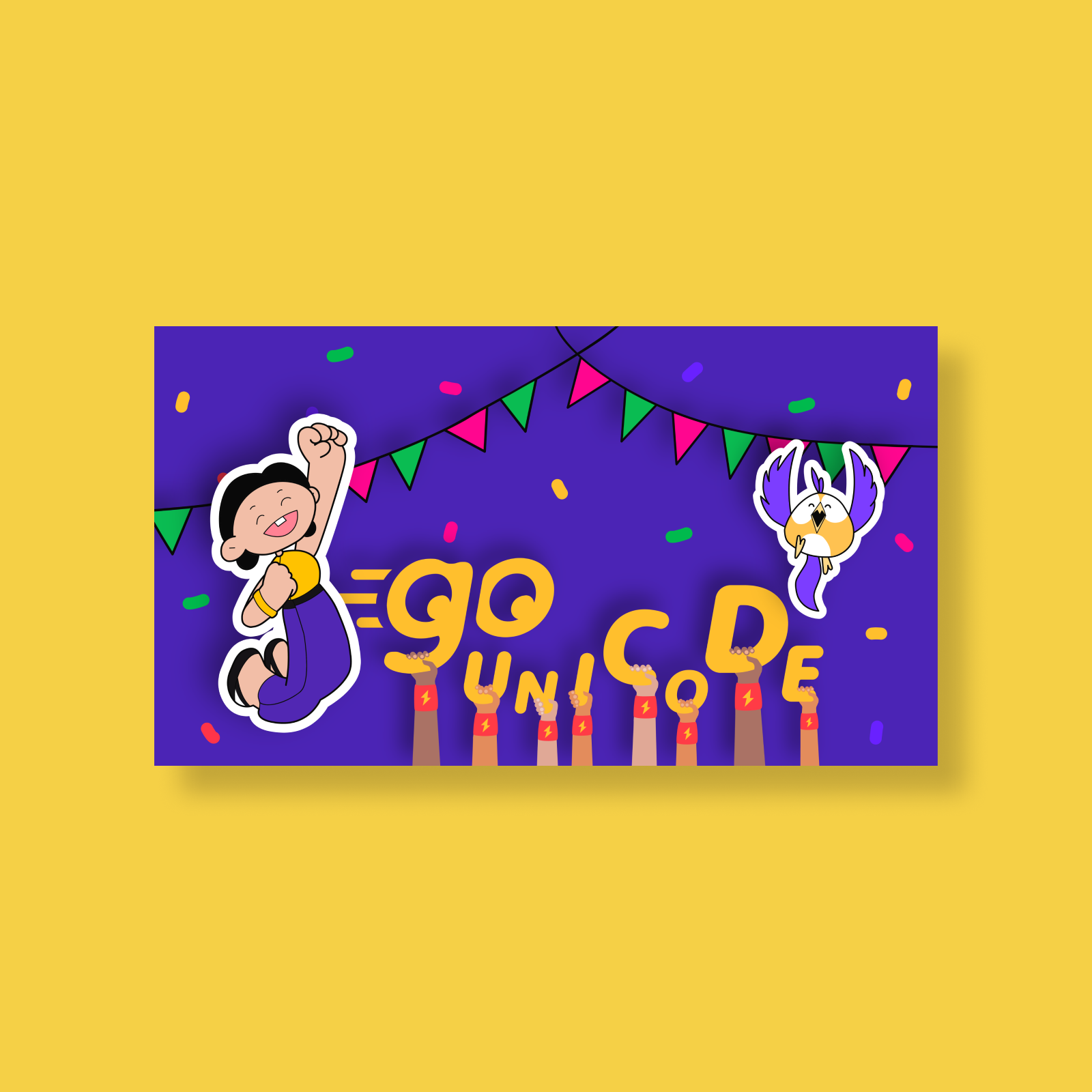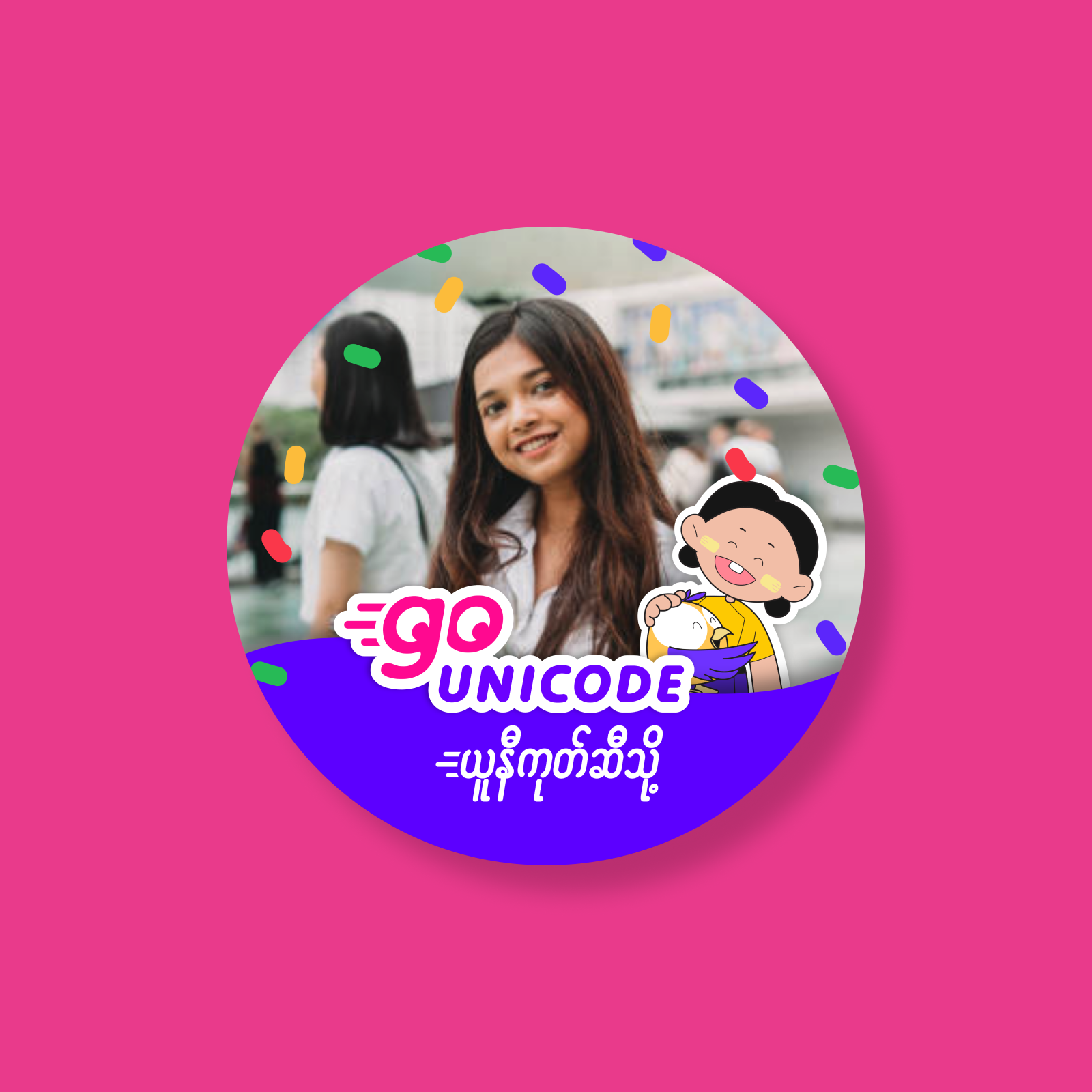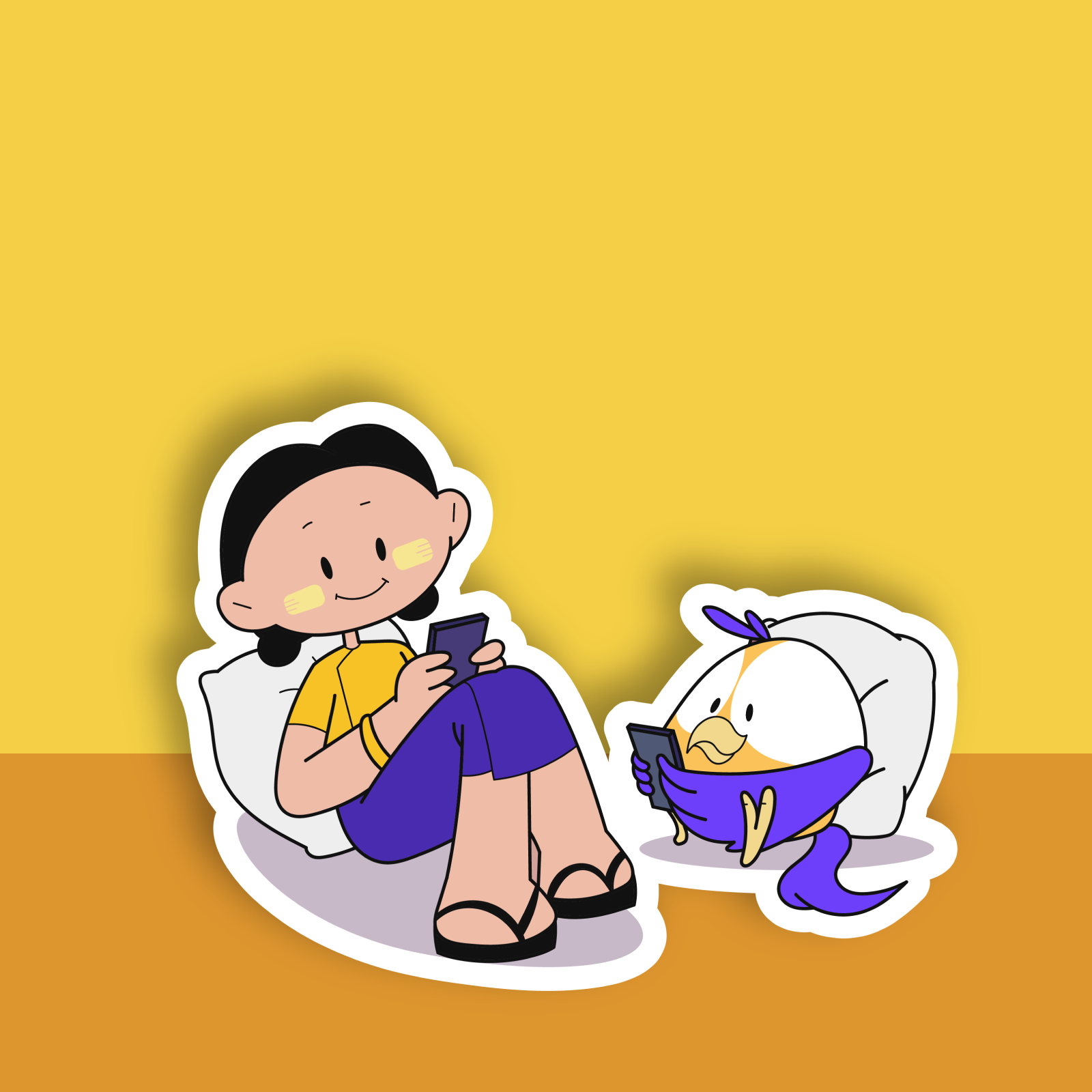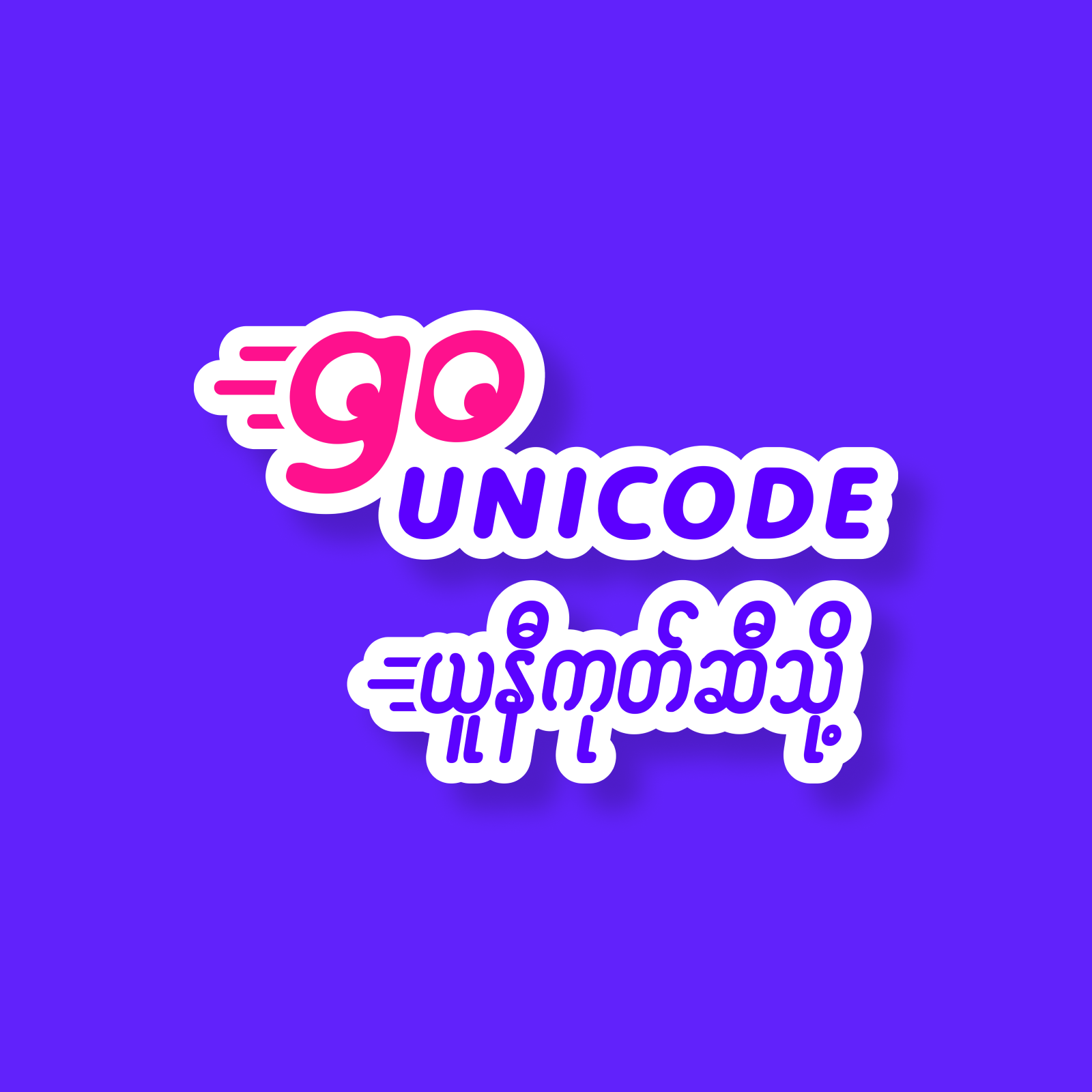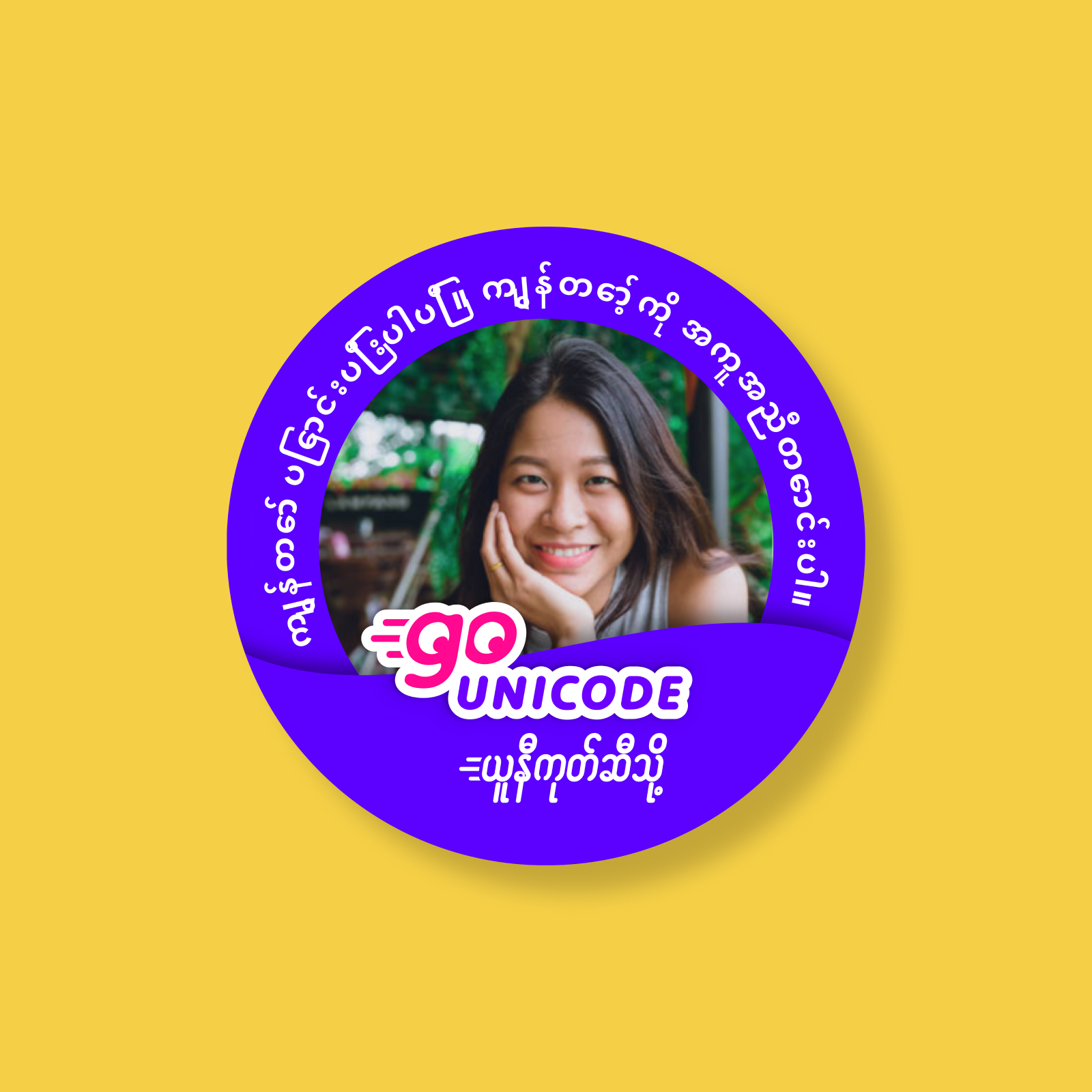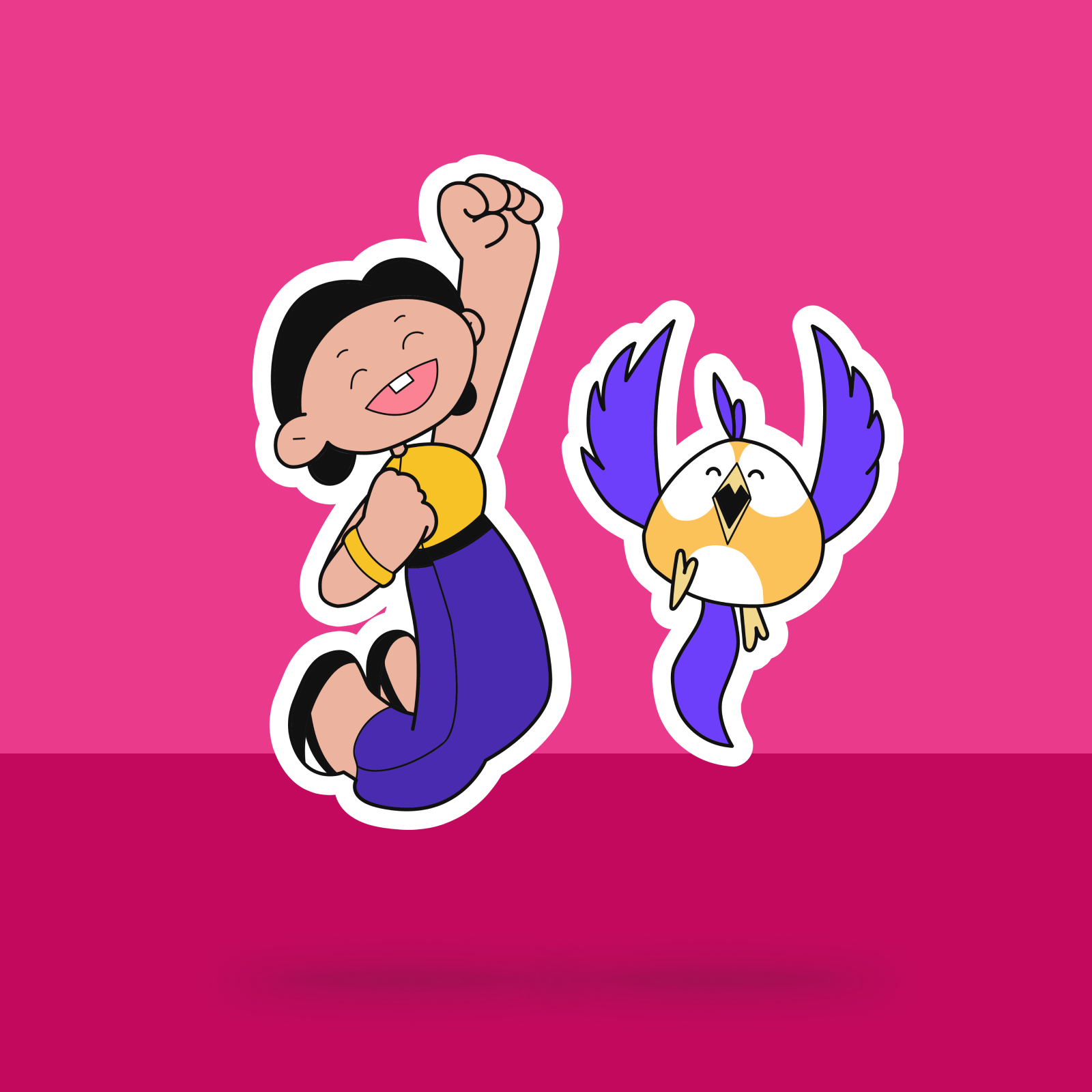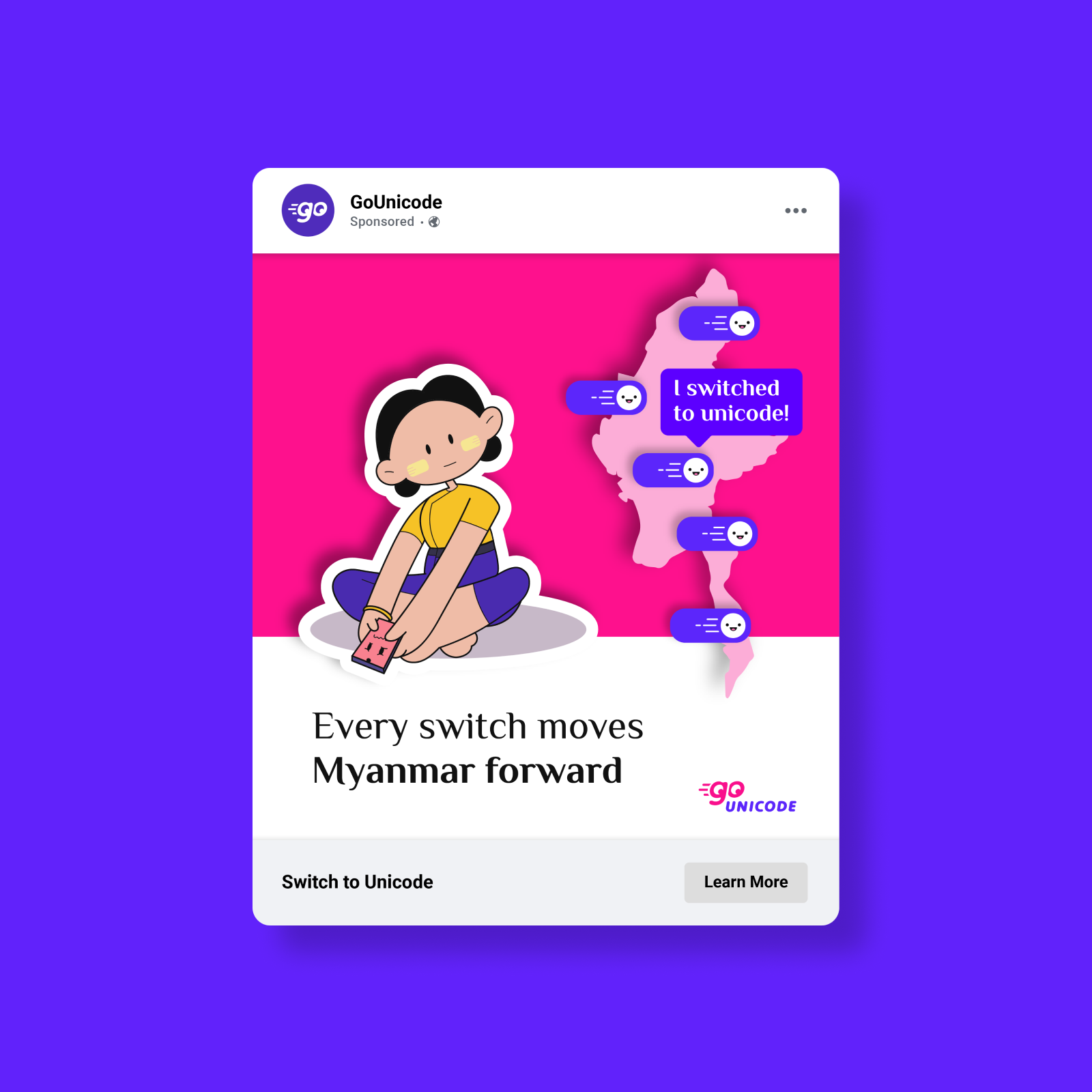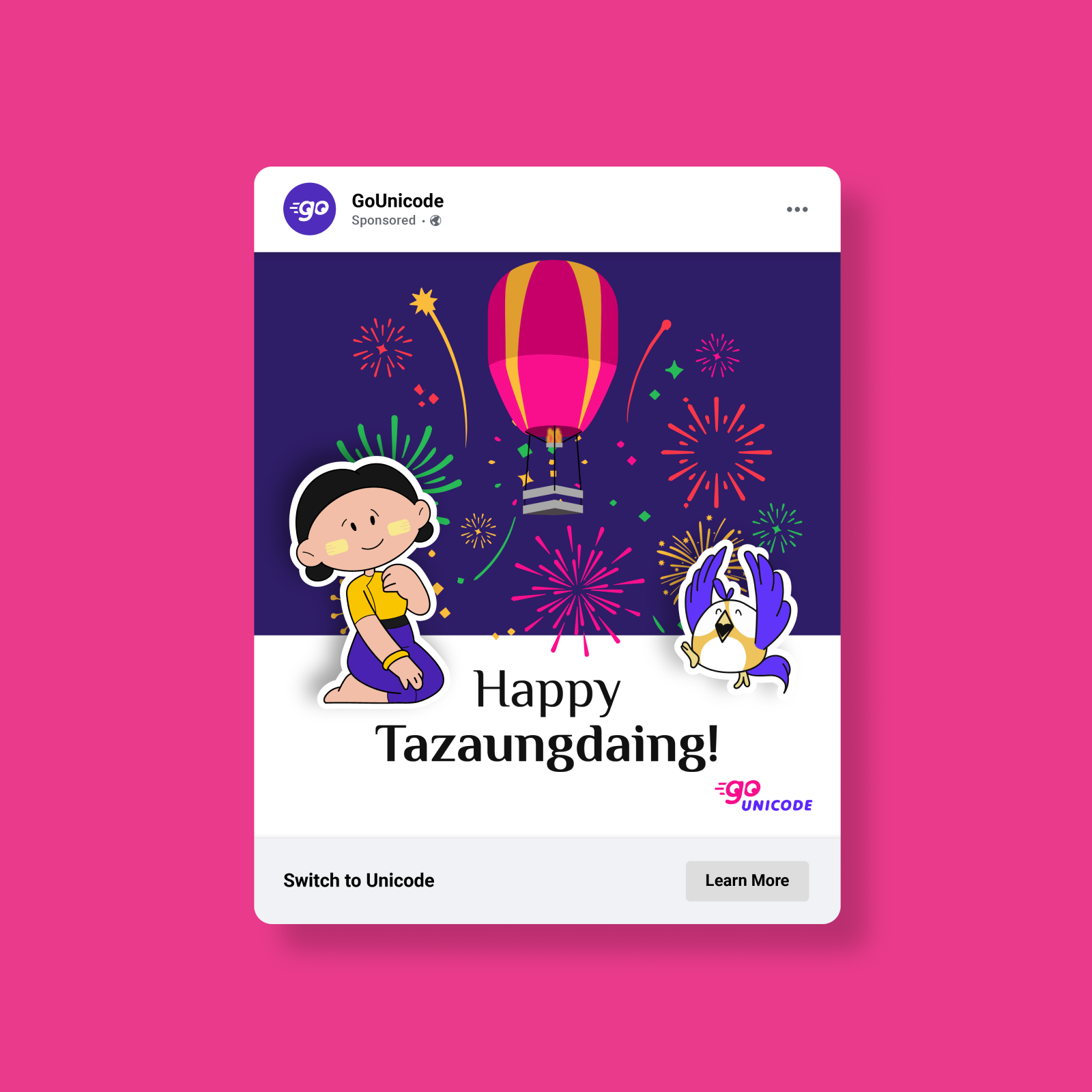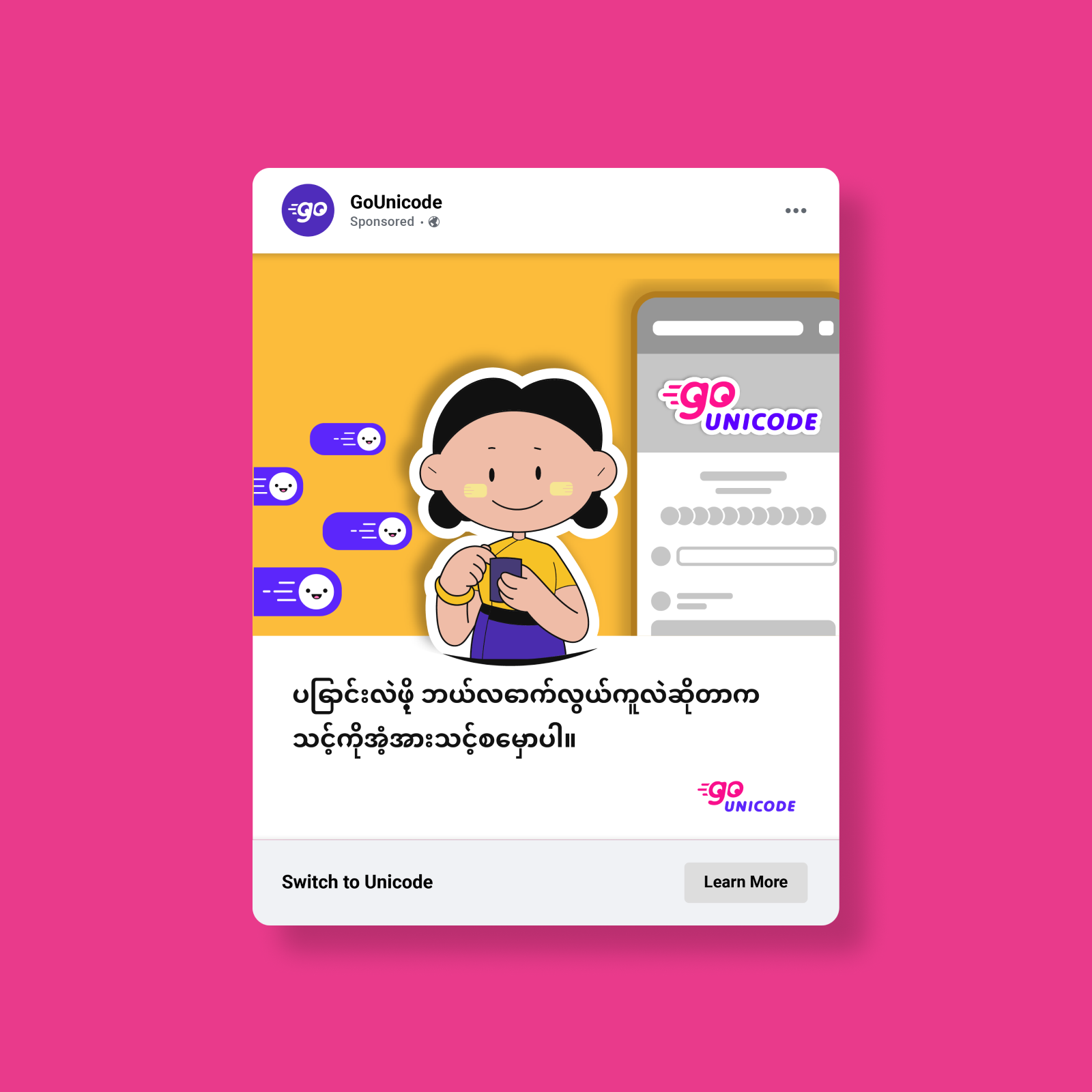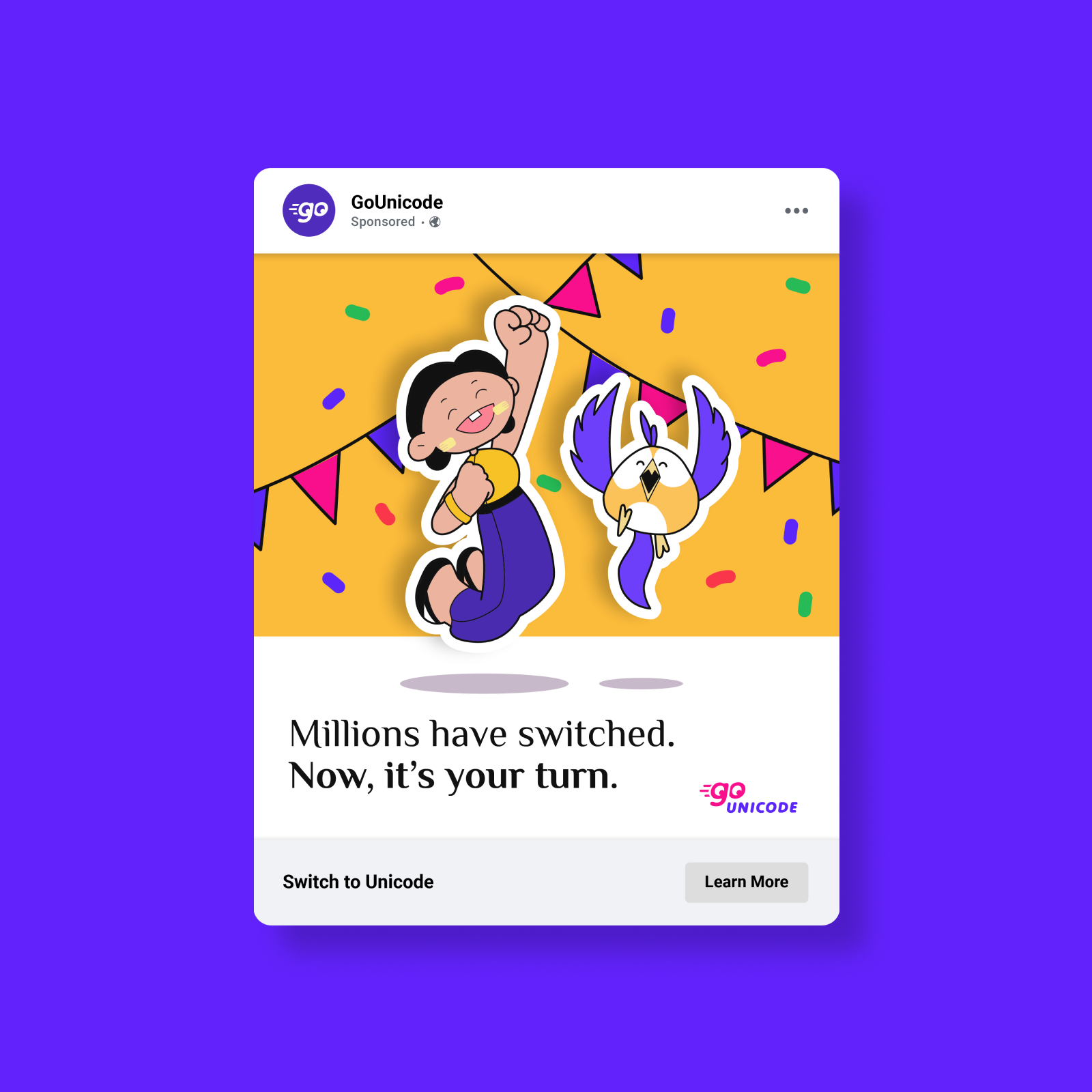Illustration by STUDIO JOOSK
Go Unicode
Strengthening the digital future of Myanmar.
Summary
The Go Unicode program is designed to help technology novices in Myanmar migrate their phones to Unicode, a key component of online safety, digital literacy and participation in the global economy.
What we did
Research & insights
Strategy
Concept development
Naming
Brand identity
Digital product development
User experience design
Advertising campaign
Pilot test & learn
Impact
Nearly 200,000 people engaged with our social media ad campaign highlighting the benefits of switching to unicode.
103 million
campaign impressions building awareness of Unicode benefits
55k
visitors to our Unicode Easy Switch Guide
20%
of users made it through all 4 steps of our guide
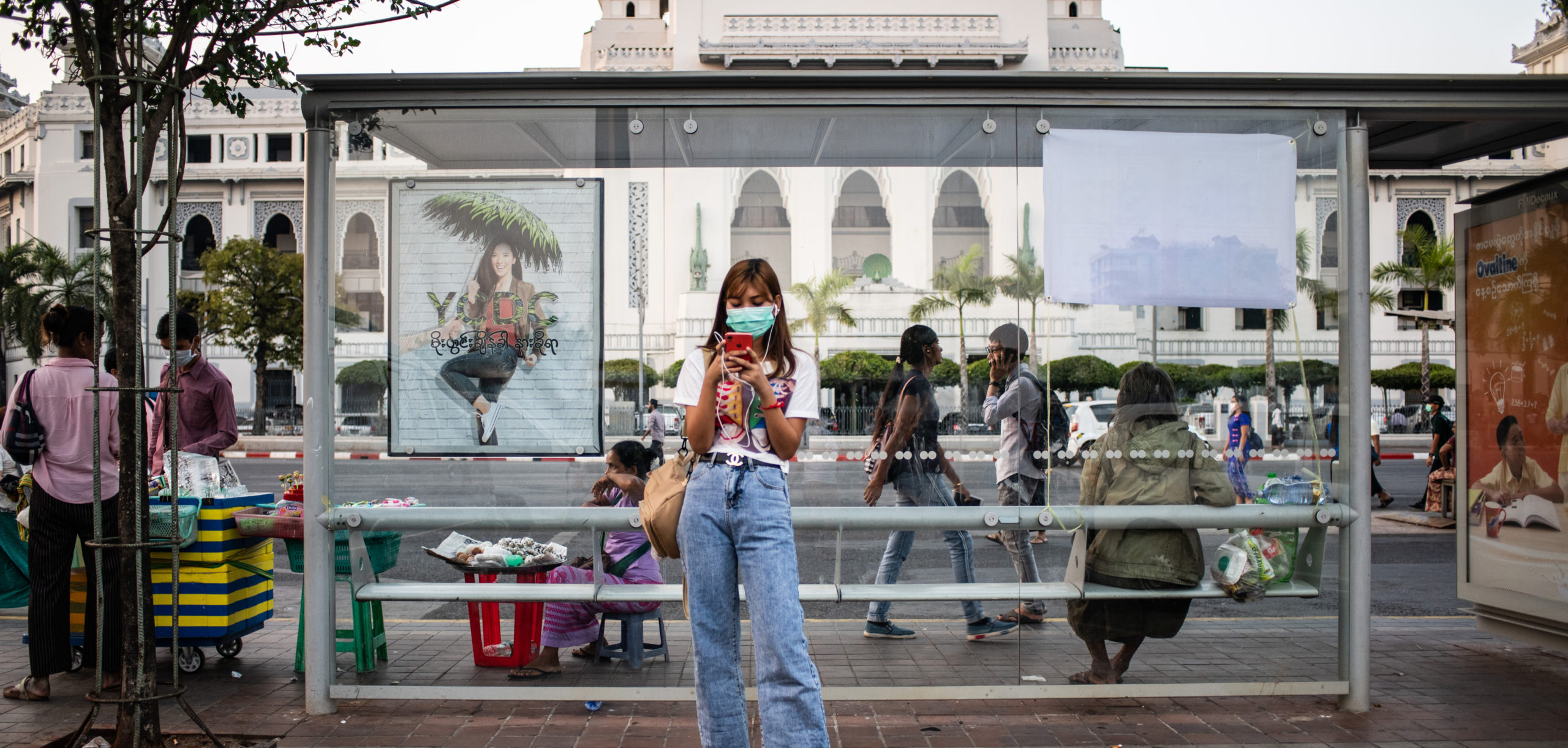
The context


In 2015, after 50 years of strict military rule, Myanmar opened up to democracy and the outside world, allowing millions of people to jump online for the very first time. Yet in their period of extreme isolation, the rest of the world had moved on to a new font encoding standard - Unicode - that freed digital information in all languages… except in Myanmar.
An opening economy put powerful mobile technology into the hands of everyday citizens, but a lack of digital literacy and an inability to access information outside their borders left them vulnerable to misinformation and real world violence.
In 2019, the government mandated Unicode adoption. Yet a year into the process, only a third of the population had switched. As our research revealed, a majority of people lacked the knowledge, skills and confidence to switch. When COVID-19 hit, migration efforts stalled.
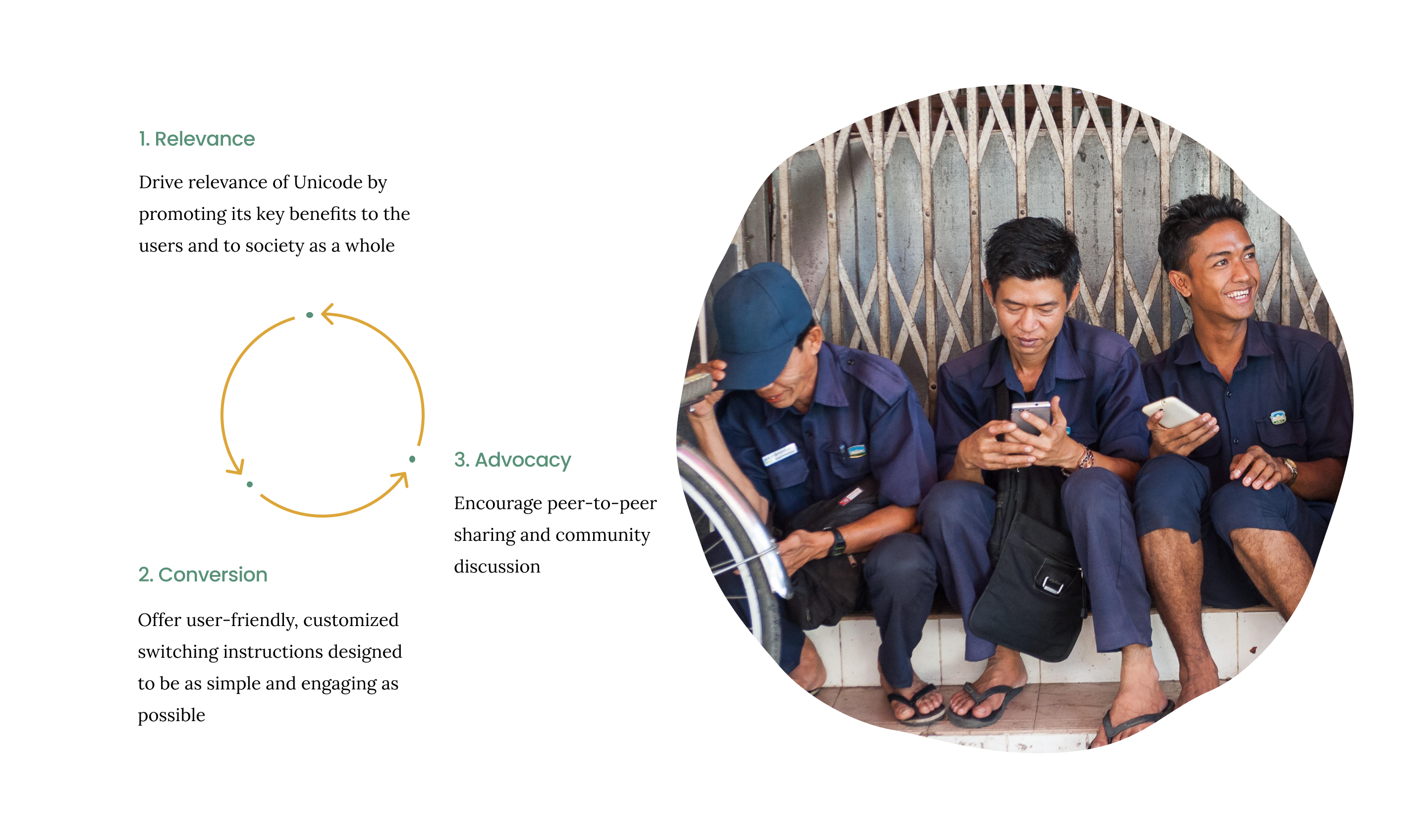
Our strategy
Due to Facebook’s ubiquity in Myanmar, we knew we needed to make them part of the solution. We approached them with a shared mission for a public service program meant to re-energize Unicode migration.
To understand the cultural, technical and social barriers to switching, we remotely interviewed 140+ Myanmar Zawgyi users, phone shop owners and technology leaders.
At the heart of our solution design was the insight that relying on phone shops was costly and time-consuming, and removed the agency from the users to take control over their technology. Our strategy was to make it possible for users to switch on their own, with a compelling and simple digital experience, that would help them take the first steps towards building digital literacy.
But to do this, we had to convince users of Unicode’s benefits, effectively support the switching process, and encourage advocacy among their extended network. We designed the program as a loyalty loop — from relevance to conversion to advocacy — so each switch has the momentum to switch others and help make it stick.

Branding
Unicode had a perception problem we needed to overcome; people thought you could only switch at a phone shop and had heard the keyboards were more difficult to type with. So we designed a new brand system to essentially re-launch Unicode in a way that would be friendly, simple, and culturally relevant to millennials.
Our program name, “Go Unicode,” conveys momentum, and invites Zawgyi users to take a second look at something they may have previously dismissed.
Our logo was designed explicitly for users who may be intimidated by technology, and evoked the energy behind switching in a friendly way. The combination of English and Burmese helped us reinforce the technical sophistication users could expect of Unicode while ensuring readability for all potential users.
The full brand system is steeped in the colors and graphics of modern Myanmar, designed to feel more like an engaging consumer technology and less like a government mandate or compliance. Every element expresses a joyful confidence and aims to build the user's courage to move beyond their technical comfort zone.
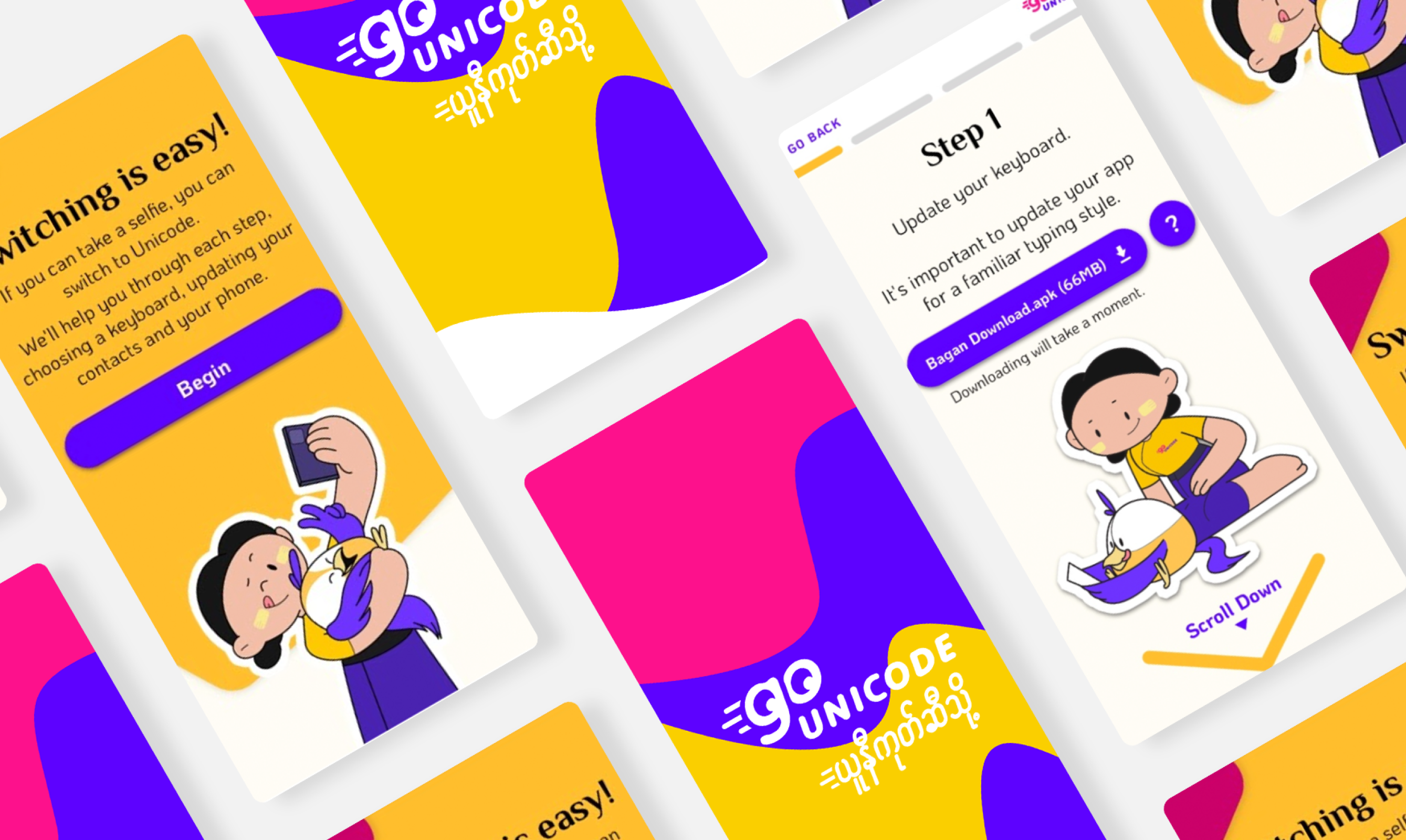
Digital product development
Our solution was the Go Unicode Easy Switch Guide, where conversion takes place via a simple, 4-step process that even digital novices can complete. The guide features clear instructions, screenshots, and encouraging, user-friendly design and copy.
We worked with UX researchers to create a version that navigated local technical hurdles like gray market operating systems, phone model and keyboard variables, and habits of side-loading apps. We also built a Go Unicode Facebook page so people could share resources, help others switch, and celebrate successes.
The outcomes
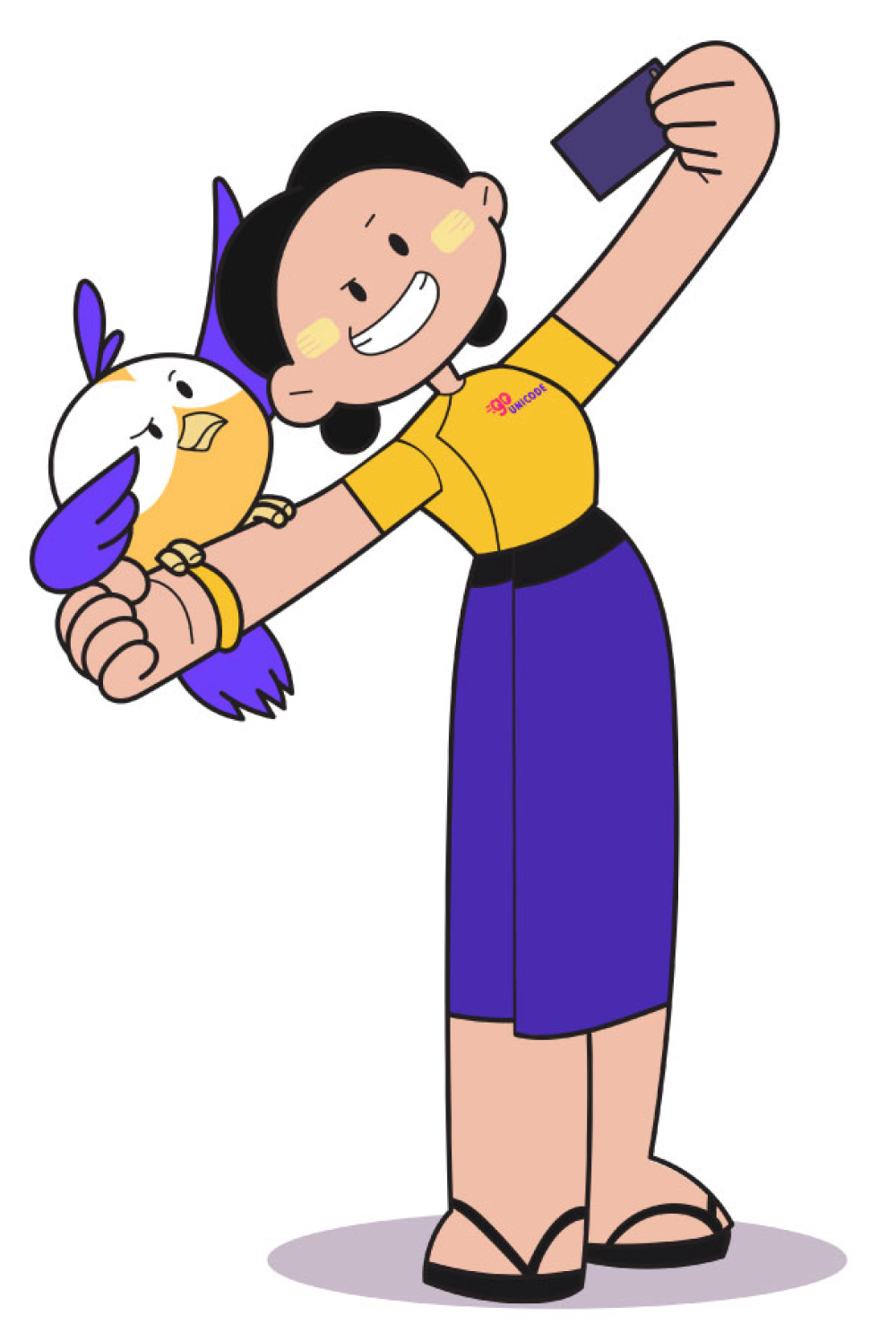
People feel empowered when they Go Unicode
We believe digital literacy is vital to supporting democratic ideals — especially in emerging democracies. For Myanmar, switching to Unicode is a key component to digital literacy, online safety, and participation in the global digital economy.
"I have never tried anything like this before. I was actually pretty impressed with myself."
– Facebook user, Female, 18, Amarapura
In the first month of our pilot program, nearly 200,000 people clicked on our Facebook ads. Once they’re in the Go Unicode switch guide, more than 20% complete the process. During the pilot period, more than 8,000 people joined our Facebook page. Learning to switch to Unicode is giving the people of Myanmar the confidence to take control of their phones and improve their digital safety. We are excited to expand this program in support of Myanmar’s efforts to Go Unicode.
200k
People clicked on our Facebook ads
8k
People joined our Facebook page
20%
Of people complete the Go Unicode process
Thank you
This work was led by AGO and delivered with regional, specialist and consultative support from:
